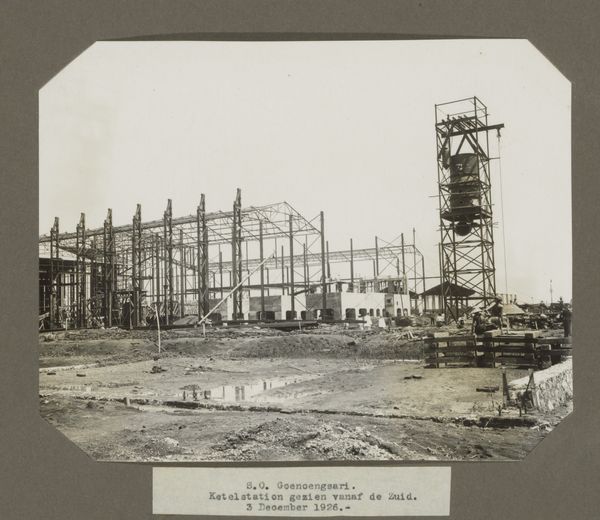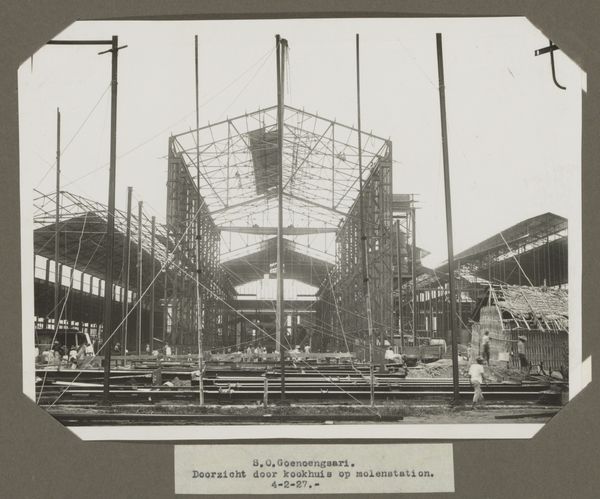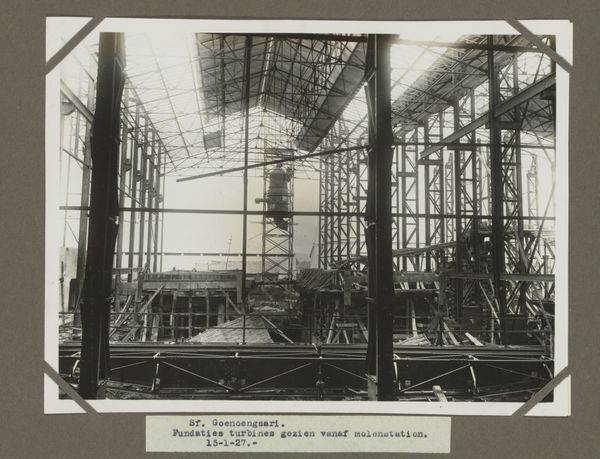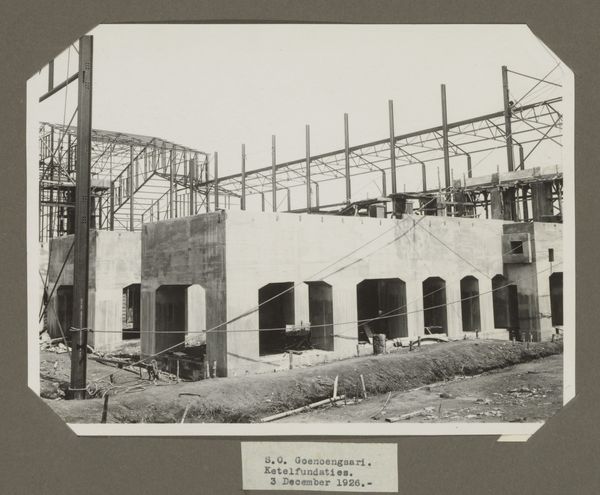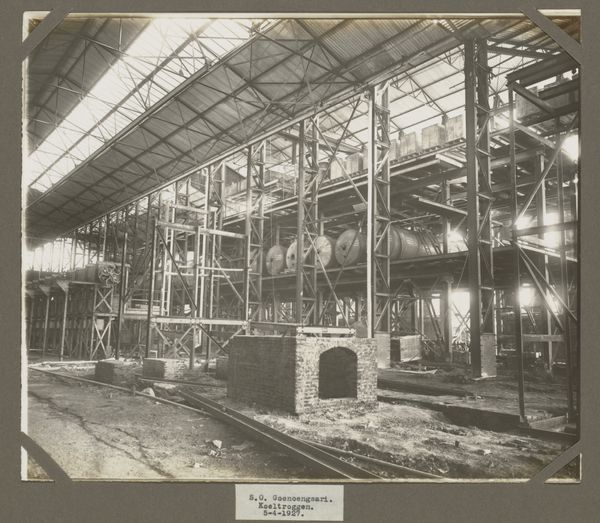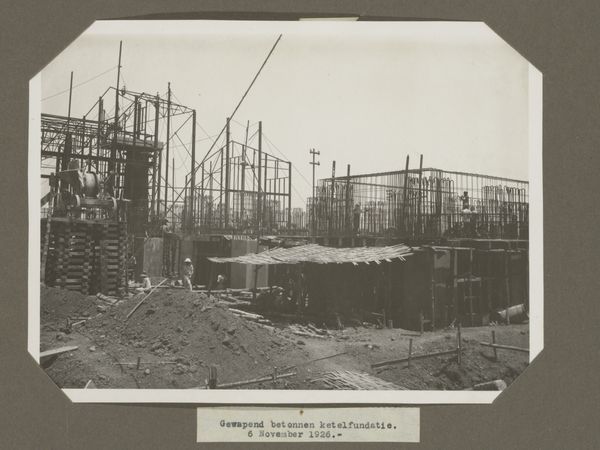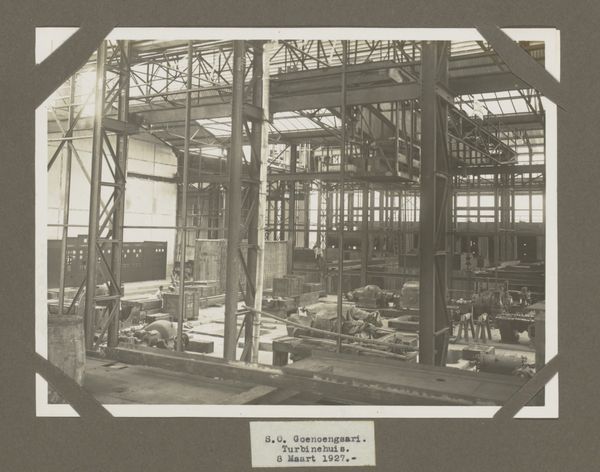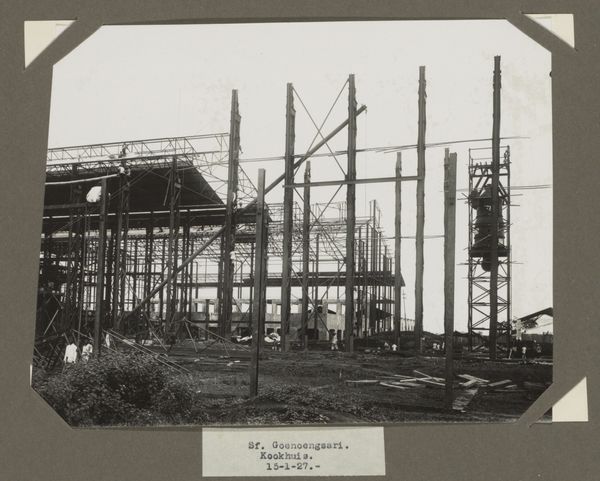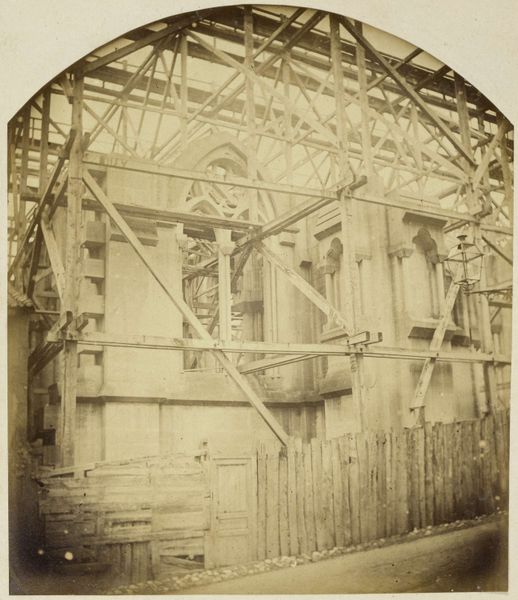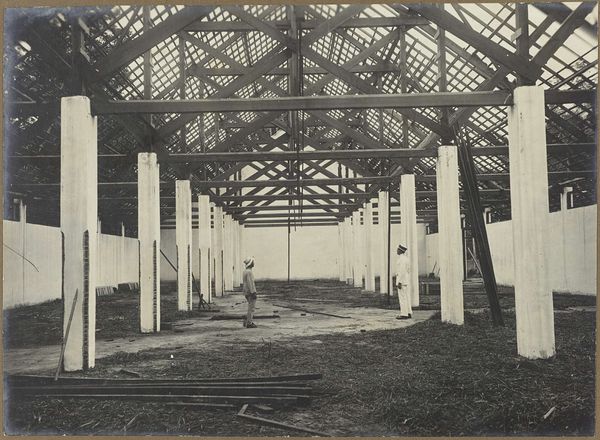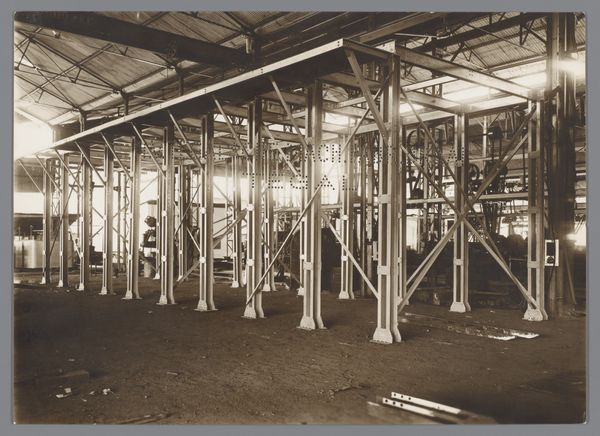
print, photography, architecture
# print
#
landscape
#
constructivism
#
archive photography
#
photography
#
historical photography
#
architecture
Dimensions: height 230 mm, width 169 mm
Copyright: Rijks Museum: Open Domain
Curator: This photograph, titled "Opbouw Molenhuis Sf. Goenoengsari. 6 November 1926.", captures a moment of industrial architecture in progress. It's an anonymous work, a print made through photography, dating back to 1926. It resides here at the Rijksmuseum. Editor: It strikes me as quite skeletal—all exposed girders and frameworks. There’s something starkly beautiful in its incompleteness. It's an interesting representation of structure. Curator: That incompleteness, as you say, is crucial. It presents the mill house not as a static object but as a process, embedding within it a narrative of labour and construction. Given the date, one can read it as a potent symbol of post-colonial transformation and early industrial progress within Indonesia. Editor: I see a strong correspondence to Constructivism. That aesthetic feels accurate given the angularity of the framework, but even deeper than that, it mirrors the Constructivist fascination with industry and labor—that push to unveil inner mechanisms of creation. Did windmills have a deeper symbolic role? Curator: Absolutely. Windmills weren't simply practical structures; they represented modernity, ingenuity, and even liberation from traditional agricultural practices. Remember, during this period, many regions of Indonesia were undergoing profound social and political changes, resisting the colonizer and forging national identities in the rise of industry. This particular windmill could stand as a beacon of hope for a brighter, industrially-empowered future. It has a distinct intersectional symbolism regarding race, politics, and national identity. Editor: Fascinating! It makes me think about how this image, consciously or unconsciously, taps into deep-seated archetypes. That ascending form suggests ambition, almost aspiring towards… what exactly? Is it progress, industrialization, or maybe even the divine? Curator: Precisely. It's about progress, yes, but it is a heavily loaded word. Who benefited from that "progress?" Who was displaced or exploited in its name? The symbolism of technology and architecture often masks inequalities that have an extensive political and social impact in the communities being represented. Editor: So much history resides in this seemingly simple photograph! Curator: Indeed, exploring such works allows us to remember that these visual echoes of transformation remain potent triggers for questions about societal progress and our complicated histories. Editor: I leave this with my mind feeling pleasantly activated, wondering what further levels can be discovered.
Comments
No comments
Be the first to comment and join the conversation on the ultimate creative platform.

